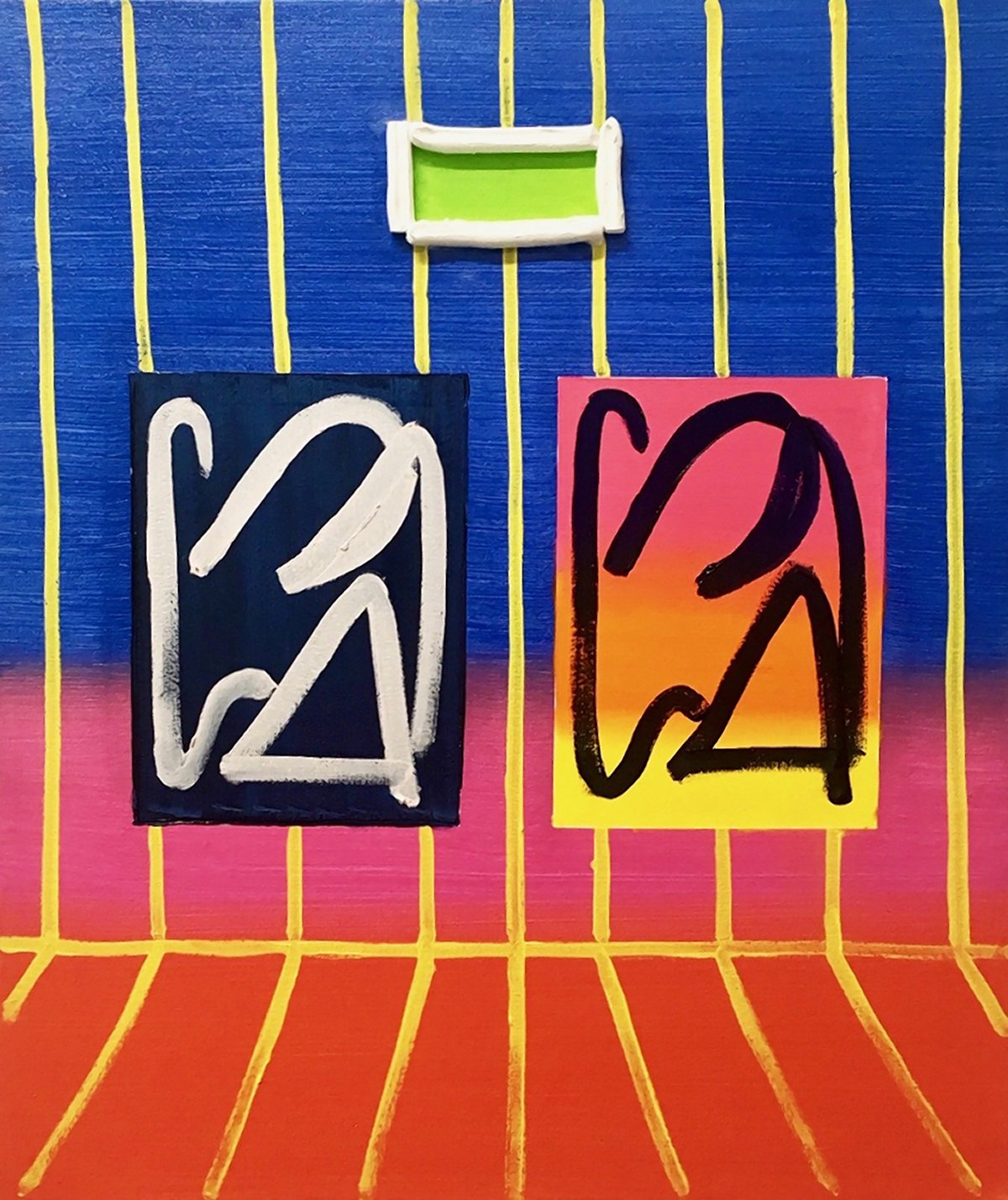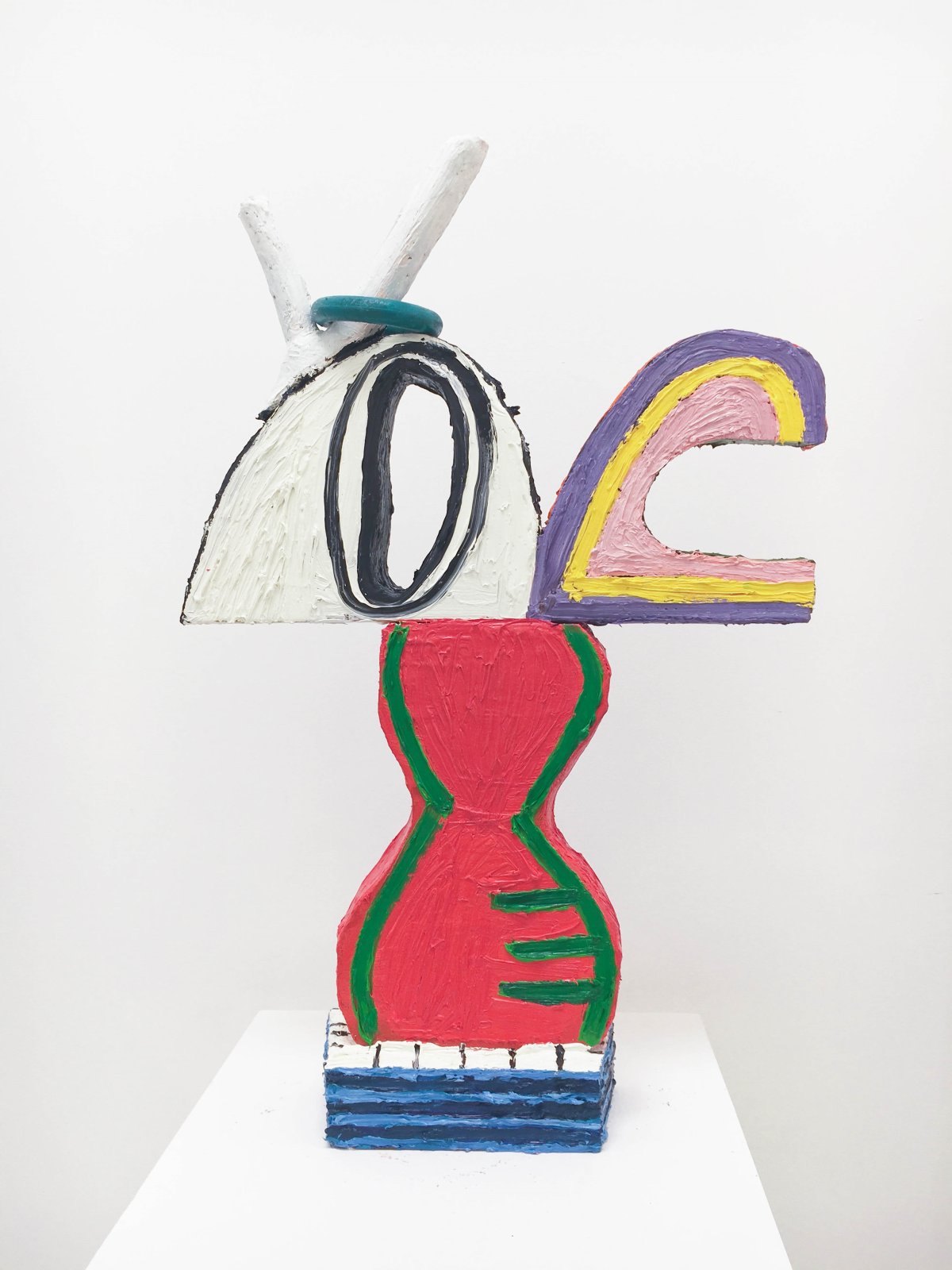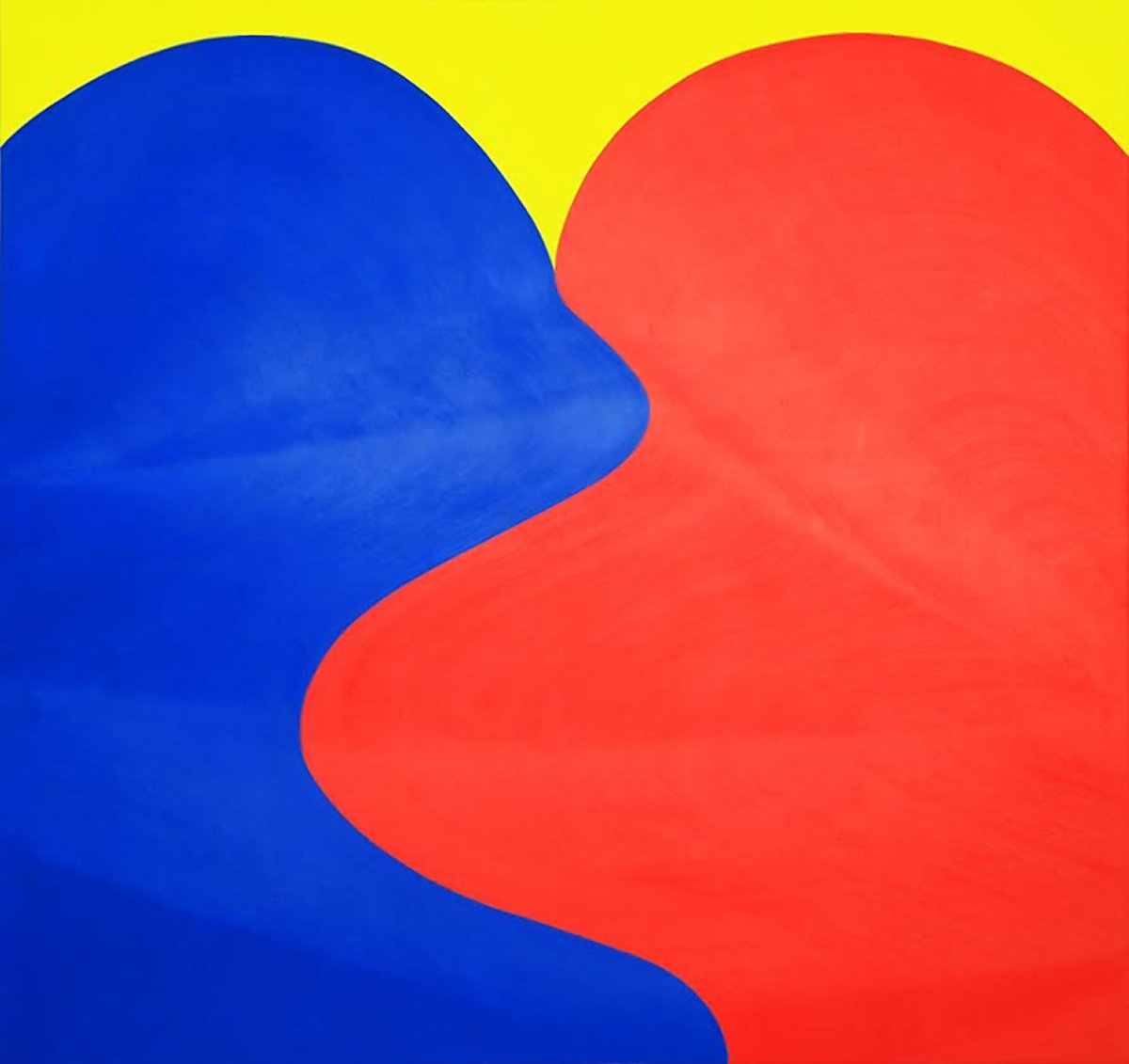
BY NANCY ELSAMANOUDI | The show “Plush Paint” is a crazy, fun, weird collection of sculptures by Susan Carr and paintings by Osamu Kobayashi and Jason Stopa at Next to Nothing on the Lower East Side.
This show is very much about paint and all of its goopy, drippy, globby, heavily layered, bumpy, thick or thin, slick, bold, sly, flat, subtle and intensely pigmented possibilities.
Carr’s magnificent, brightly colored, freestanding sculptures and wall pieces are made mostly of oil paint and wood. The wood she uses typically comes from repurposed found objects that are then cobbled together to make the basic shape of the sculpture. Basic shapes, like triangles, squares, circles and rectangles, as well as patterns, like dots and stripes, tend to be the primary building blocks of her visual language.
Carr paints the wood surface of her pieces as if it were a surface for painting. Yet, she also works with paint as if it were resin, wax or clay.
Her work has an affinity with painters like Mardsen Hartley, R.B. Kitaj and Tal R, as well as contemporary artists working in clay and ceramics today like Rebecca Goyette, Ana Weider Blank and Joanne Greenbaum.
The surfaces of Carr’s sculptures are heavily, obsessively layered with thick impasto. Pieces such as “Warrior” and “I Have Measured My Life Out in Carrots” read as a kind of three-dimensional painting or a kind of “painting in the round.” Her sculptures tend to be uniformly covered in thick impasto that has been layered on slowly over time.

Like Carr, Stopa works with thick impasto paint, yet differently. The thick lines Stopa paints over the mostly flat surfaces of his paintings are precariously awkward. At first, the thick lines look somewhat like glued-on collage elements — cords or ropes. But then you notice the paint is still very much wet in some areas. There are also odd moments, where it looks as if he was squeezing out toothpaste or rolling out some neon Play-Doh.
Like a number of his contemporaries, such as Jonathan Lasker and Keltie Ferris, Stopa plays on this ambiguity by deliberately creating confusing or surprising moments in his artwork. For instance, his paintings “Exit/Entrance” and “Green Window,” feature large rectangles in their middle that look like post-it notes stuck in a sketchbook. These strange passages can be read possibly as figures, doors, windows or gates, or as paintings or a mirror within a painting.
There is a long history of artists making paintings that contain paintings or mirrors in them. These range from the usual suspects — Matisse and Picasso — to Vermeer, Van Eyck and Velazquez.
At the same time, there is a gritty kick in these works that speaks to contemporary culture. Stopa pairs neon pink and lime green with black and rancid yellow. These paintings seem to be informed by punk, interior design, textiles, architecture and a pop sensibility.

Kobayashi’s paintings similarly seem to be informed by popular culture, comic books, advertising, video games and anime. His works are a little wonky, in a poised, gratuitously elegant way — like a slightly crooked bow tie. A sly humor undergirds his paintings. This is especially true in “Bubble Brothers,” a monumental 10-foot red, blue and yellow painting of two hugging doughboys, painted in the colors of the ultimate superhero, Superman.
“Plush Paint: Please Do Not Pet, Caress, Fondle” on view at Next to Nothing, 181 Orchard St., between E. Houston and Stanton Sts., until Jan. 20.

















